 1993 Toyota Corolla Compact VII (E100) Dimensions, Size & Specs
1993 Toyota Corolla Compact VII (E100) Dimensions, Size & SpecsMeasurements of the 1993 Toyota Corolla Compact VII, engineered for optimal performance and comfort
| Dimensions | |
|---|---|
| Length: | 4059-4095 mm159.8-161.2 in13.3-13.4 ft |
| Width: | 1685 mm66.3 in5.5 ft |
| Height: | 1380 mm54.3 in4.5 ft |
| Trunk Capacity: | 309 liter10.9 cu ft |
| Trunk Capacity (Max): | 748 liter26.4 cu ft |
| Weight Specifications | |
| Curb Weight: | 1010-1560 kg2227-3439 lbs |
| Maximal permitted Weight: | 1555-1975 kg3428-4354 lbs |
| Tire Specifications | |
| Rims Size: |
|
| Tire Sizes: |
|
The Toyota Corolla Compact VII, known by its chassis code E100, was produced from 1992 to 1997 and represents the seventh generation of the iconic Corolla lineup. This hatchback model is especially appreciated for its balanced size and practicality, making it a popular choice in the compact car segment throughout the 1990s. With a length ranging from 4059 to 4095 mm (159.7 to 161.2 inches), a width of 1685 mm (66.3 inches), and a height of 1380 mm (54.3 inches), the Corolla Compact VII strikes a perfect balance between maneuverability in urban settings and providing adequate interior space. Its curb weight varies between 1010 and 1560 kg (2227 to 3440 lbs), depending on the trim and configuration, making it relatively lightweight and agile for a vehicle in this class. The maximum weight capacity ranges from 1555 to 1975 kg (3429 to 4355 lbs), supporting a good payload for passengers and cargo. Notably, the rear luggage compartment offers 309 liters (10.9 cubic feet) of storage space, which can be expanded to 748 liters (26.4 cubic feet) when the rear seats are folded down, enhancing its utility for transporting larger items. The Corolla Compact VII rides on 14-inch rims fitted with tire sizes such as 165/70 R14 T, 165/70 R14, 185/65 R14 H, and 185/65 R14 T, providing a good balance between ride comfort and road grip. Overall, the Corolla E100 hatchback remains a well-sized, economical, and versatile vehicle that fits well in the compact hatchback category, appealing to drivers seeking reliability combined with practical dimensions.
Discover the standout features that make the 1993 Toyota Corolla Compact VII a leader in its class
Have a question? Please check our knowledgebase first.
The 1993 Toyota Corolla Compact VII (E100) hatchback measures between 4059 mm to 4095 mm (approximately 159.8 to 161.2 inches) in length. It has a consistent width of 1685 mm (about 66.3 inches) and a height of 1380 mm (around 54.3 inches). These compact dimensions make it a practical and easy-to-maneuver hatchback, suitable for both city and suburban driving environments.
The curb weight of the Corolla E100 hatchback ranges from 1010 kg to 1560 kg (2227 to 3440 lbs), while its maximum weight varies from 1555 kg to 1975 kg (3429 to 4354 lbs). The variation depends on the specific trim and features. A lighter curb weight generally contributes to better fuel efficiency and nimble handling, characteristic of the Corolla's reputation for reliable and economical driving.
The Corolla E100 hatchback offers a luggage capacity of 309 liters (about 10.9 cubic feet) with the rear seats in the upright position. When the rear seats are folded down, the cargo space significantly increases to 748 liters (approximately 26.4 cubic feet). This flexibility allows owners to carry everyday groceries comfortably or larger items by folding down the rear seats, enhancing the car’s practicality for various transportation needs.
The Corolla E100’s length of up to 4095 mm (161.2 inches or about 13.4 feet), width of 1685 mm (66.3 inches or 5.5 feet), and height of 1380 mm (54.3 inches or 4.5 feet) mean it generally fits comfortably into a standard single-car garage. Most standard garages, with widths of at least 2.4 meters (8 feet) and lengths of 4.8 to 6 meters (16 to 20 feet), provide sufficient room for easy parking and passenger door access.
Compared to the Corolla E90, the E100 generation exhibits a slightly more modern and aerodynamic shape with modest increases in dimensions. Length increased marginally, moving from around 4015-4060 mm (158 to 160 inches) to between 4059 and 4095 mm (160 to 161 inches). Width also grew slightly, contributing to a roomier interior. Curb weight in the E100 varies more widely, reflecting improvements and more features, but generally, it maintains a lightweight stance conducive to efficient performance.
Compared to other compact hatchbacks from the early 1990s like the Honda Civic or Volkswagen Golf Mk3, the Corolla E100 is competitive in size. Its length around 4.06 meters (13.3 feet) and width of 1.68 meters (5.5 feet) place it right in the compact segment, not too large or too small. Its generous luggage capacity and relatively light curb weight made it an appealing choice for drivers seeking practicality and reliability.
The Corolla E100 came equipped with 14-inch rims, paired with several tire size options: 165/70 R14 T, 165/70 R14, 185/65 R14 H, and 185/65 R14 T. Smaller tire widths like 165 mm emphasize fuel efficiency and comfort, while 185 mm widths offer improved grip and sportier handling. This range allowed buyers to prioritize either ride comfort or more responsive handling performance.
The Corolla E100 introduced a more aerodynamic and contemporary hatchback design, with slight increases in overall length and width compared to its predecessor. These dimensional refinements provided enhanced interior space, greater luggage flexibility with fold-down rear seats, and an efficient, balanced curb weight. These improvements reinforced Toyota’s focus on reliability, ease of use, and everyday practicality.
Yes, the Corolla E100 hatchback is well-suited for urban driving. With its length just over 4 meters (about 13.3 feet) and modest width, it is compact enough to navigate tight city streets and parking spaces with ease. Additionally, its relatively low height and light curb weight contribute to nimble handling and good fuel economy, making it an efficient choice for daily commuting.
The E100 generation Corolla set a strong precedent with its durable build, balanced dimensions, and user-friendly design. Its success reinforced Toyota's commitment to improving cabin space, cargo versatility, and maintaining agile handling within a compact footprint. These qualities informed the designs of later Corolla generations and influenced broader segment standards for compact hatchbacks, combining practicality with dependable performance.
Discover similar sized cars.
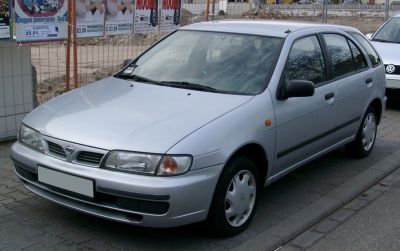
| Production: | 1995-2000 |
|---|---|
| Model Year: | 1995 |
| Length: | 4120 mm162.2 in |
| Width: | 1690 mm66.5 in |
| Height: | 1396 mm55.0 in |

| Production: | 2004-2010 |
|---|---|
| Model Year: | 2004 |
| Length: | 4170-4223 mm164.2-166.3 in |
| Width: | 1892 mm74.5 in |
| Height: | 1442 mm56.8 in |
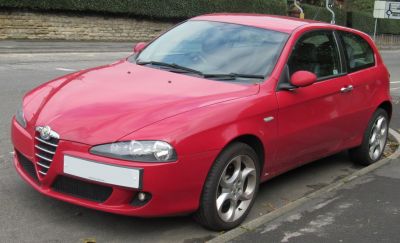
| Production: | 2004-2010 |
|---|---|
| Model Year: | 2004 |
| Length: | 4170-4223 mm164.2-166.3 in |
| Width: | 1892 mm74.5 in |
| Height: | 1442 mm56.8 in |
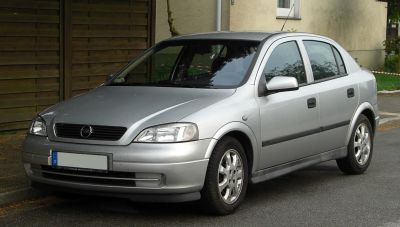
| Production: | 1998-2002 |
|---|---|
| Model Year: | 1999 |
| Length: | 4110 mm161.8 in |
| Width: | 1989 mm78.3 in |
| Height: | 1405-1425 mm55.3-56.1 in |
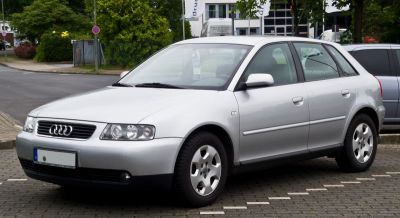
| Production: | 2000-2003 |
|---|---|
| Model Year: | 2001 |
| Length: | 4152 mm163.5 in |
| Width: | 1735 mm68.3 in |
| Height: | 1427 mm56.2 in |
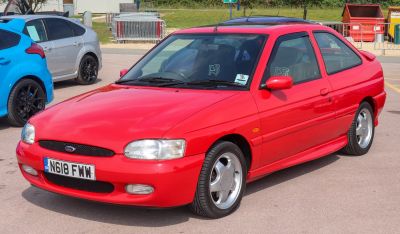
| Production: | 1995-1999 |
|---|---|
| Model Year: | 1995 |
| Length: | 4104 mm161.6 in |
| Width: | 1691 mm66.6 in |
| Height: | 1398 mm55.0 in |
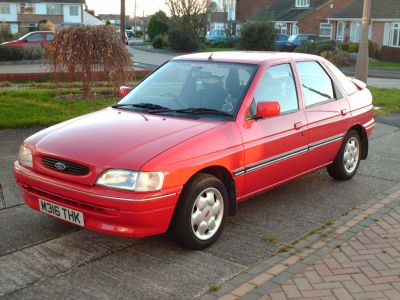
| Production: | 1991-1996 |
|---|---|
| Model Year: | 1993 |
| Length: | 4036-4211 mm158.9-165.8 in |
| Width: | 1692-1738 mm66.6-68.4 in |
| Height: | 1364-1450 mm53.7-57.1 in |

| Production: | 1997-2005 |
|---|---|
| Model Year: | 1997 |
| Length: | 4053 mm159.6 in |
| Width: | 1660 mm65.4 in |
| Height: | 1357 mm53.4 in |
